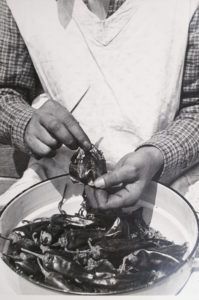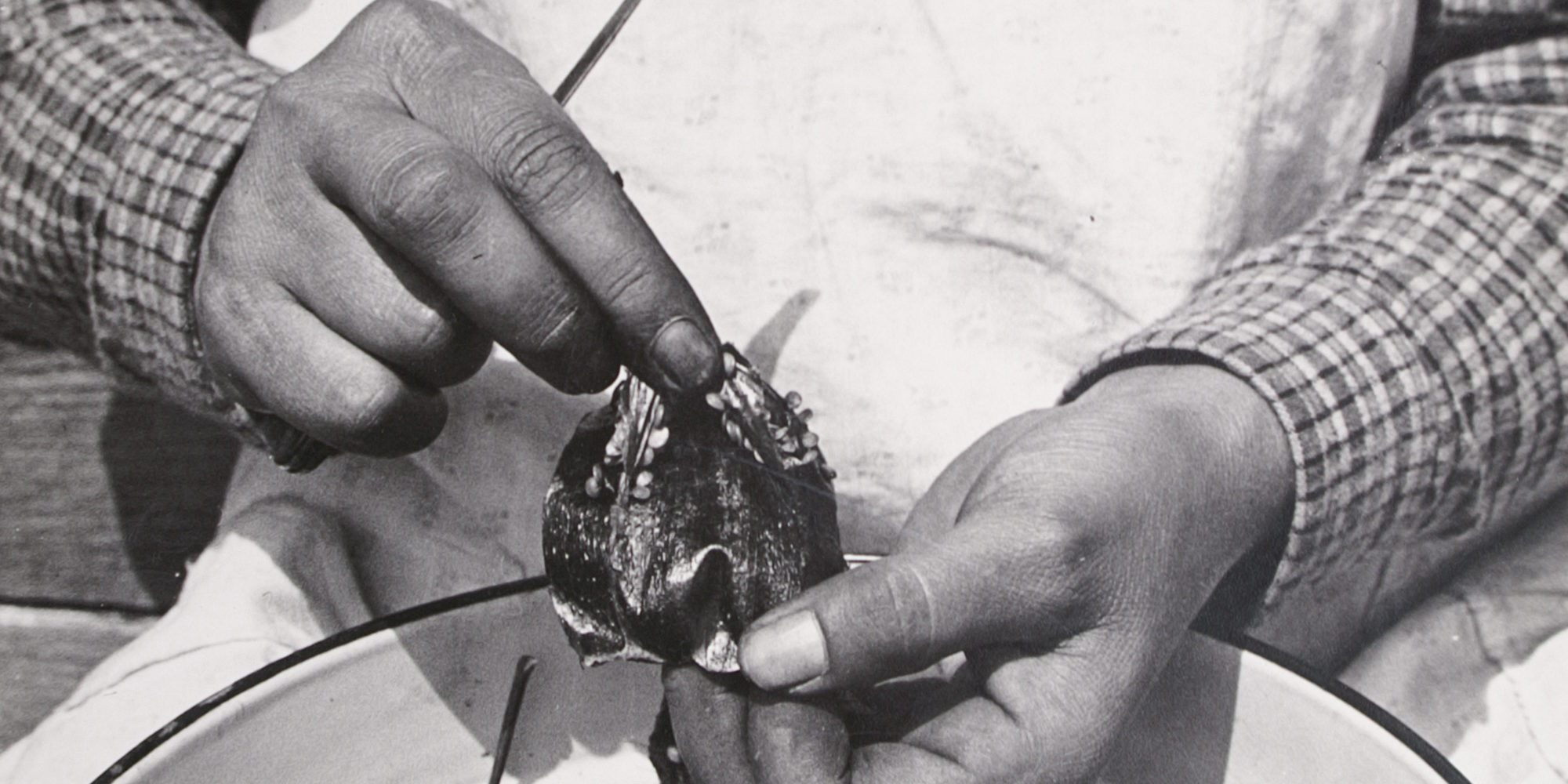Paprika is in the air is the title of a collection of essays, short stories and articles written by Zsigmond Móricz, early-20th century writer and columnist. In September 1936 he goes deep into Paprika Town and marvels at the sight of red people in red clothes, with red hair, red hands and faces. Like red ghosts in daylight, he described the sight of paprika millers and processors in Szeged.
September and October is paprika harvest time in Hungary. This is the best time to visit as the sight is unforgettable. What did Móricz see in 1936?
In olden times (and on small farms today) the freshly harvested fruit was strung into long garlands and hung under the eaves of houses and were left to dry there for weeks. Of this sight, Móricz said: „Under the roofs, above the fences, off tree branches, paprika-garlands are hanging everywhere. This is such an exotic sight, so beautiful that it should attract tourists from as far as Calcutte or London, or anywhere indeed. The sight of a country house full with paprika-garlands is a wonder.”
But, the hardest part of the work comes when the pods are taken off the garland for further processing. In those days all paprika pods were naturally hot, in fact, too hot for consumption. This was the Szeged invention: when the pod was taken off the garland, the green stem of the fruit was removed, the pod was cut up and the seeds and all the hot parts (the pith, the ribs and the glands) were removed. The paprika flesh without the hot parts turned out to be mild in taste and high in quality. This was to become the famous Szegedi paprika: bright red, clean, flavourful and mildly hot. However, the work that was required to remove all those hot parts was a hell of a work: the hot parts were everywhere: on eyelashes, hair, hands and feet, inside clothes. It was painful, it was itchy, it hurt the skin hard. But, at the end of the day it was worth it: every family member had a share of the work. They were making money and even the youngest ones contributed to the family’s expenses.
The seeds were never thrown away, but were washed and dried and added to the crushed paprika. Of this, Móricz wrote: „In the middle of the village there is a well. Next to it a concrete basin. In the basin young men and women stand barefoot, even in winter frost, and tread for hours on bags full of paprika seeds. Why? Because the seeds are damn hot. But you need them to make good spice.”
Móricz is compassionate and witty as he listens to young men and women complaining that the paprika is so hot that they can’t sleep at night and have to go out to find relief for the painful hands from the night breeze. He’s amused and sees this as a great match-making opportunity!
18 September 1936

Processing paprika
Tetszett a cikk? Ha szeretne még paprikás és fűszeres témában, heti rendszerességgel cikket olvasni, hírt kapni az ÚJ paprika elkészültéről, iratkozzon fel hírlevelünkre. Subscribe to our Blog and enjoy our Paprika Poster.







